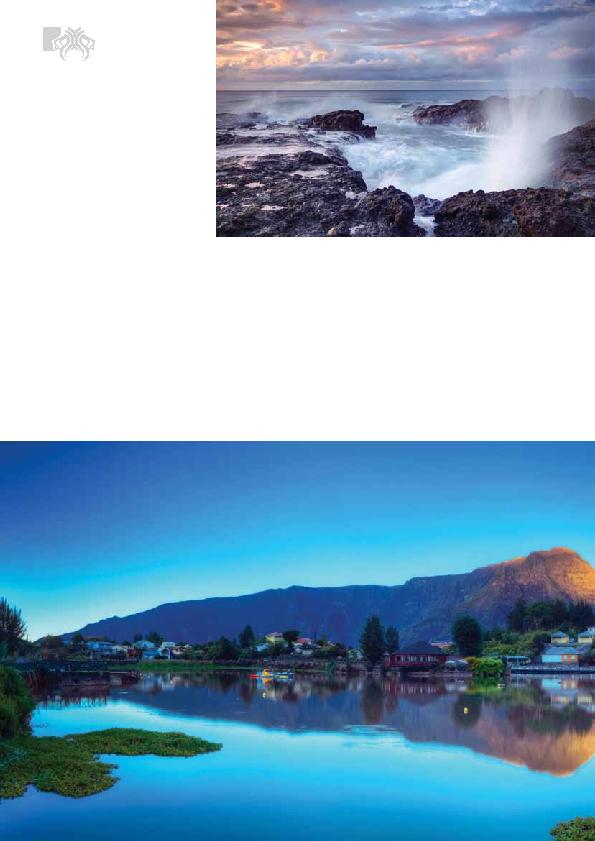
often likened, Réunion is situated above a
hotspot volcano in the Earth's crust. This
hotspot is responsible for creating the
islands of Mauritius and Rodrigues, as well
as Réunion's active shield volcano, the Piton
de la Fournaise translation "the peak of
the furnace."
located on the eastern side of the island,
rises a whopping 2,631 metres above sea
level and is more than 530,000 years old.
It is one of the most active volcanoes in
the world and has erupted more than 150
times since the 17th century. The last
confirmed eruption was on 9 December
2010, when lava flowed from two fissures
on the volcano's northern flank and
travelled approximately 1.5 kilometres
north and northwest.
volcano with gently sloping sides, built
almost entirely from fluid lava flows. Large,
with a low profile that is reminiscent of a
warrior's shield, volcanoes like this one
are known for their effusive eruptions,
where lava literally spills over in all
directions and travels further than that of
the northwest. Though older and much
larger than the Piton de la Fournaise, the
Piton des Neiges has been extinct for
some 20,000 years and is heavily eroded.
At 3,069 metres above sea level, it is both
the highest point on Réunion and in the
entire Indian Ocean.
the Cirque de Mafate, surround Piton des
Neiges and at least two of them provide the
starting points for hiking trails that lead to
the peak of the Piton des Neiges.
Cirques and Remparts of Reunion Island" as
a World Heritage site.
zone of La Réunion National Park. The
property covers more than 100,000 ha or
40 % of La Réunion, an island comprising
two adjoining volcanic massifs located in the
south-west of the Indian Ocean.
cirques, the property includes a great
variety of rugged terrain and impressive
escarpments, forested gorges and basins